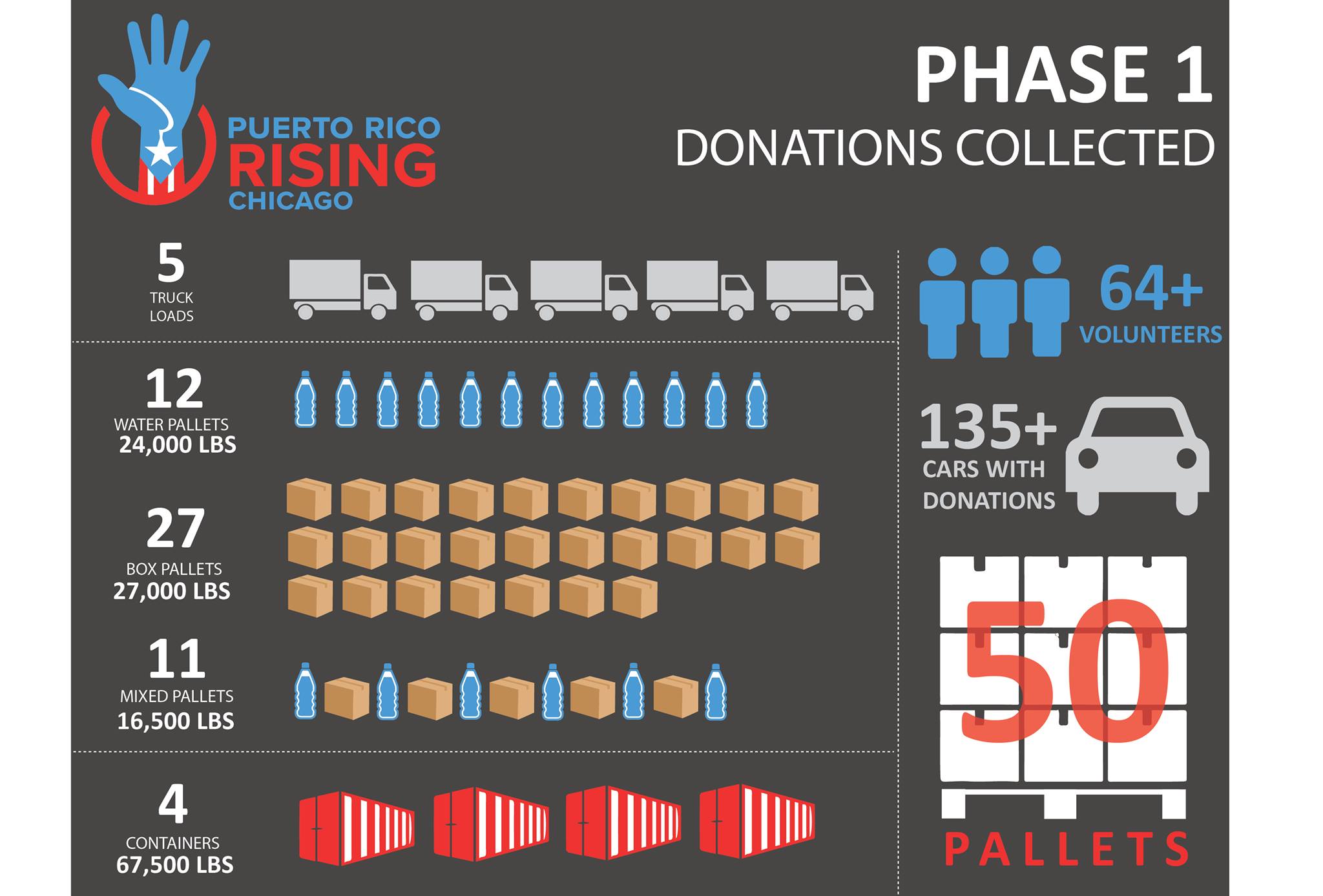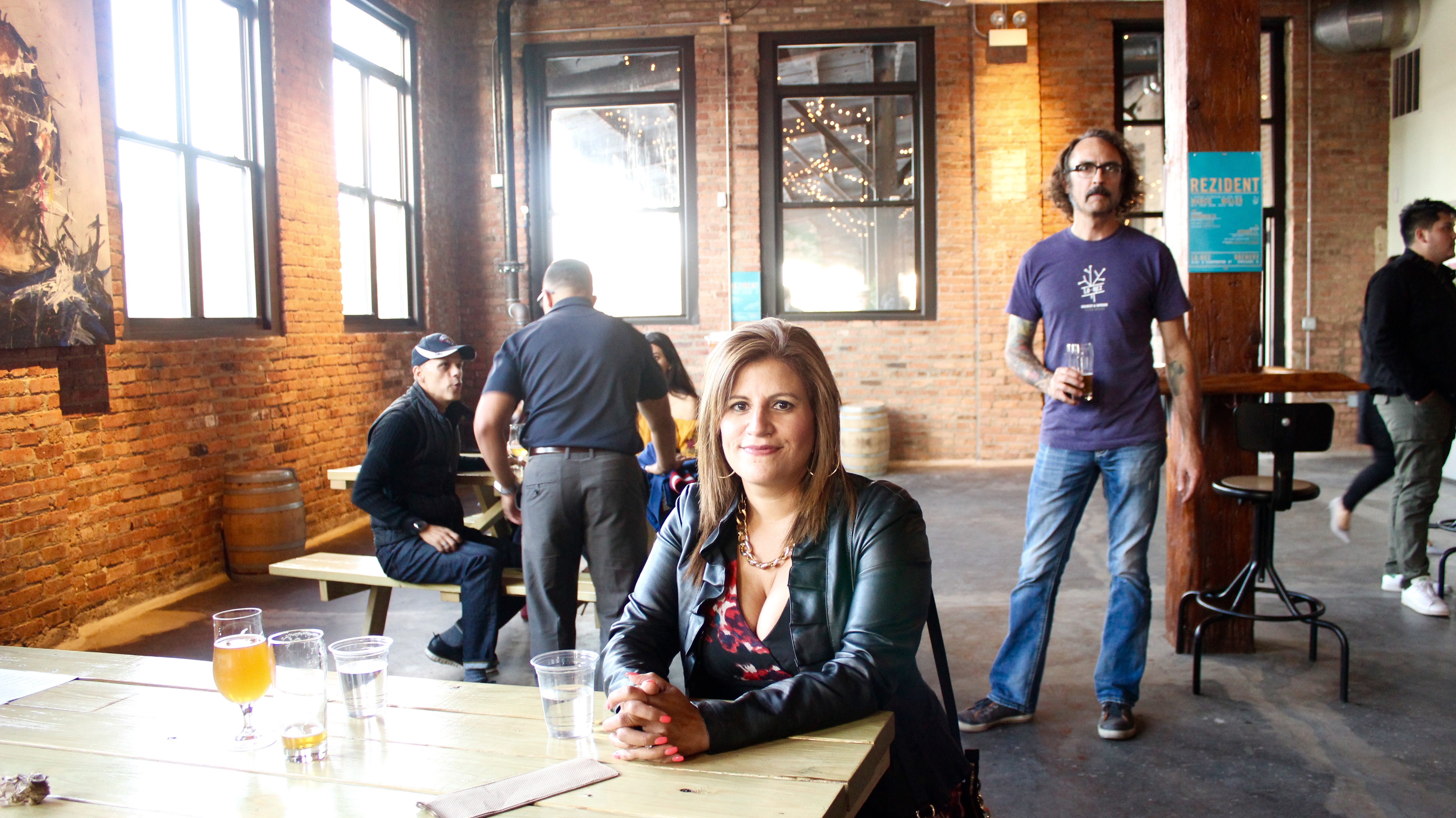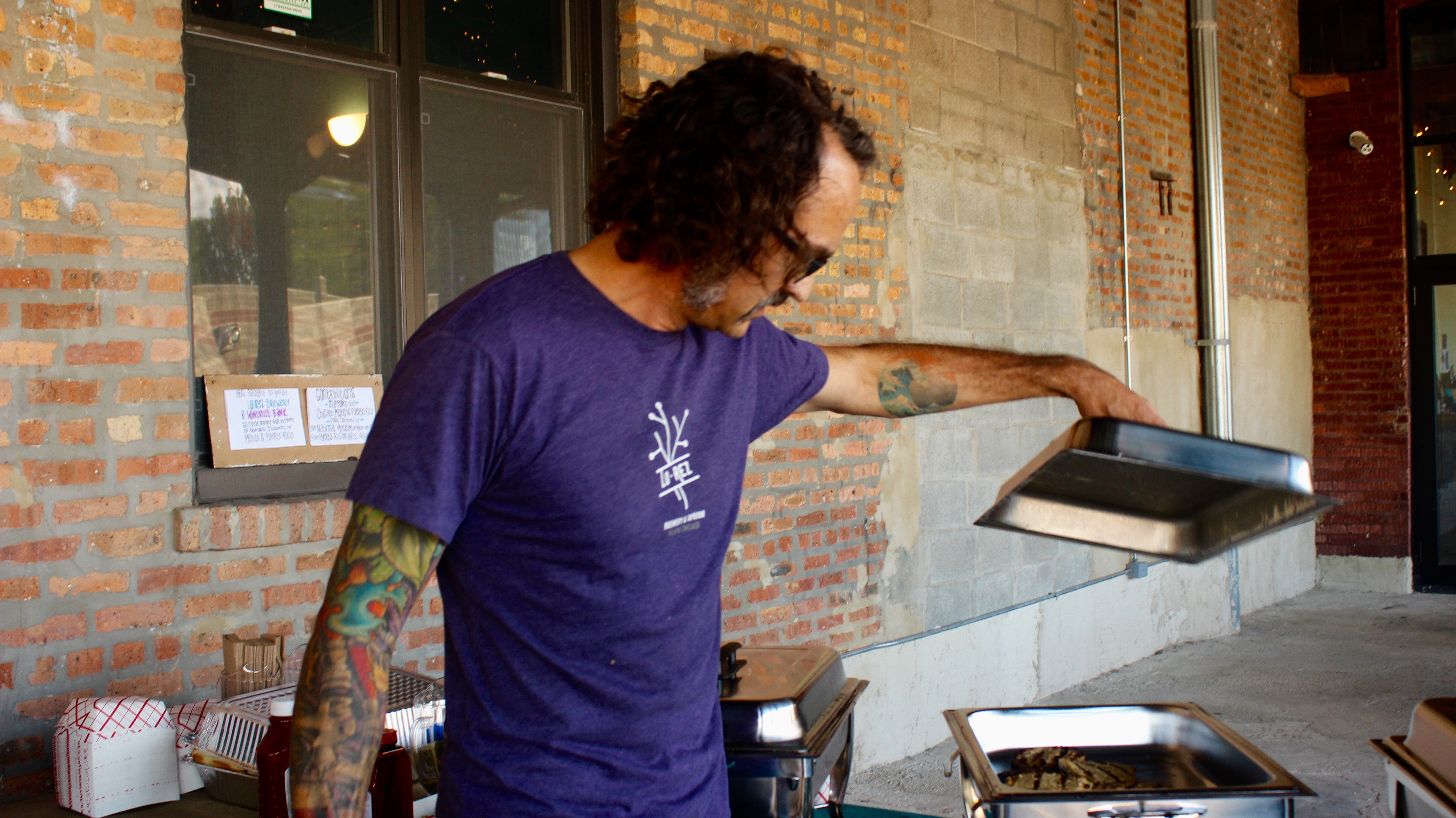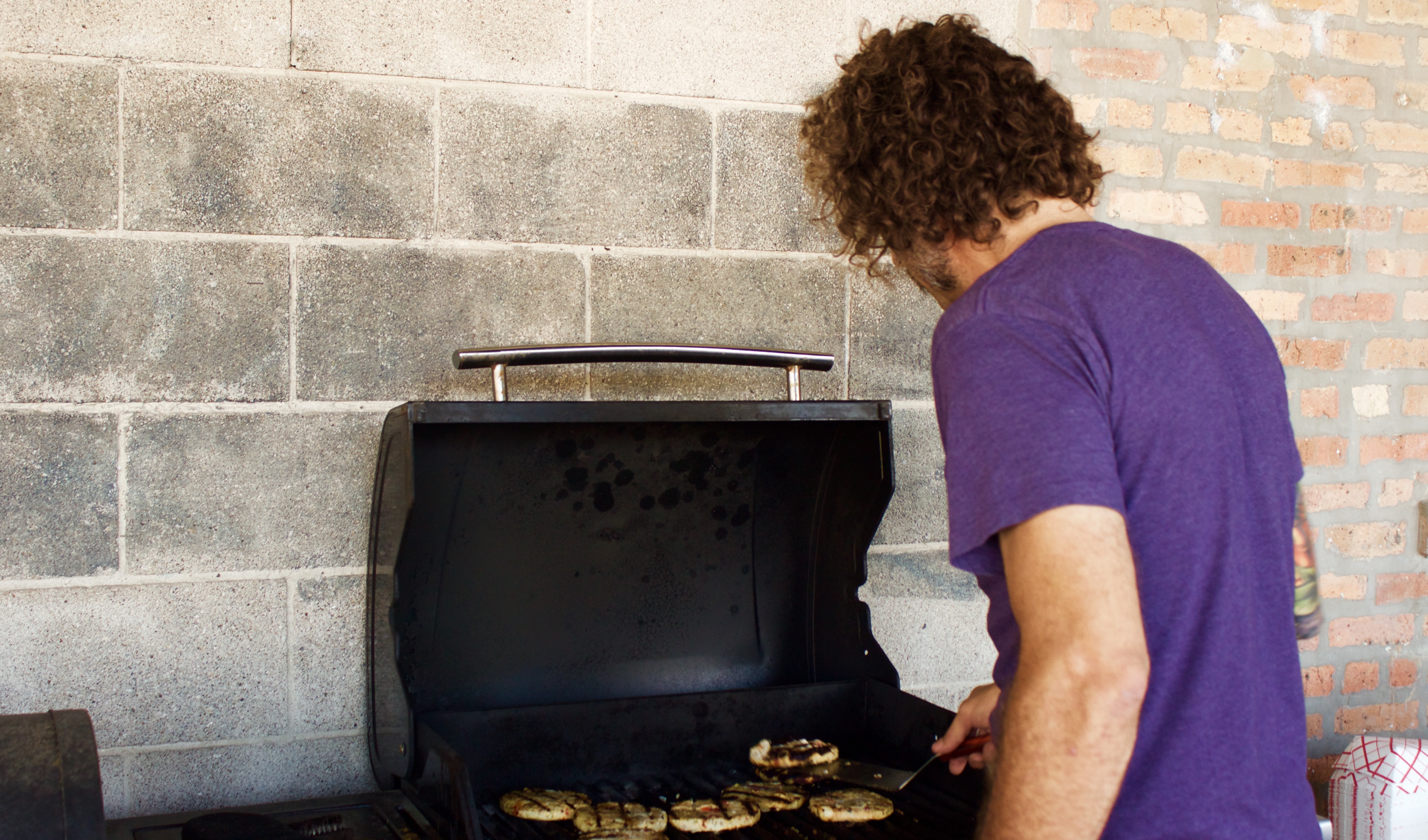In the wake of tragedy, Chicago offers relief to communities rebuilding.
Pilsen resident Teresa Roman first heard of the Mexico City earthquake while listening to the radio in her car. Not again, she thought as she drove home to turn the TV on, watching the coverage unfold.
Roman thought of her aunts, uncles, cousins who currently live in Mexico City. She had visited them two years prior, remembering the immensity of the city and density of its population.
A 7.1 magnitude earthquake struck Mexico City on Sept. 19, resulting in more than 350 fatalities and toppling dozens of buildings across the city. Only 12 days prior, just before midnight on Thursday, Sept. 7, the country had experienced another earthquake about 400 miles south — one of 8.1 magnitude, its most powerful in a century.
Mexico sits on an active fault line — the meeting place of two tectonic plates on the Earth’s crust. Over time, pressure builds between the plates until they shift, sending shockwaves. These quakes usually range from a 3 to 4 magnitude. In Mexico City, over 40 buildings and structures have collapsed in the last month. Surrounding towns have been leveled, leaving thousands homeless. The Sept. 19 earthquake, though, came on an eerie anniversary; another 8.0 magnitude earthquake struck on the same day in 1985, killing over 10,000 people across the country.
Roman’s cousins had been rehearsing earthquake drills that morning. Once the actual earthquakes struck, they used Facebook’s safety check function to communicate with family they were safe — and alive.
Facebook has been the best means of communication for Roman and her family. The social media application has a crisis response feature that allows users to find information during a crisis. Though Roman’s family was safe and their home suffered no damage, they felt the fear that spread throughout their city.
A map indicating the path of Hurricane Maria as well as the two earthquakes in Mexico. (Cody Corrall, 14 East)
At the same time across the Atlantic, the Category 4 Hurricane Maria passed through the already battered island of Puerto Rico. The island was still recovering from Hurricane Irma, which made its way through the U.S. territory two weeks prior. Hurricane Maria was the most damaging storm for the island in 85 years.
Averaging one hurricane every three years, tropical storms are old news for the water-locked Puerto Rico. What made Maria different, though, was timing and location. Striking the island just two weeks after Hurricane Irma, the island did not have ample time to recuperate from the first storm. The center of the hurricane also directly hit the island, with its 60 mile reach affecting highly populated areas such as capital San Juan, home to around 400,000 people.
Roman’s father-in-law lived on the island. Having weathered many tropical storms, he considered Irma and Maria to be normal occurrences during hurricane season. He didn’t store food or buy batteries for a flashlight.
Communication with her family in Puerto Rico was less linear. Roman’s father-in-law only owned a landline phone, and since over 90 percent of the island lost electricity, phone calls were out of the question.
Facebook activity was sparse for a bit, too. Once power slowly began to restore, Roman and her sister-in-law used the social media service to talk to communities on the island, asking neighbors if they have seen their grandfather and to please check on him.
They have not received any news on his condition since the storm.
To this day, only 20 percent of Puerto Rico has power and the official death toll has risen to 48 (although the total may be as high as 450, according to Vox). Over 80 percent of the island’s crop value has been wiped out, with a loss of $780 million in agricultural yields.
Four separate disasters, two different locations but with similar aftermaths. Two countries working to rebuild, their call to action making its way across borders and oceans, through cities and prairieland, up the Mississippi and to the hearts of Chicago communities.
It was comfortable in Chicago on the evening of Friday, Sept. 29. The weather was beginning to shift for the start of autumn, with a light breeze and golden red sky. In the city’s Pilsen neighborhood, residents had gathered outside Lo Rez Brewing Company to share beers, stories, laughs. Lo Rez owner Dave Dahl stands between two smoking grills, shifting from flipping patties to greeting patrons. A glass jar labeled “donations” sits on a table, next to the ketchup and mustard bottles.
Inside, Roman and her husband sit at a table, talking quietly. More patrons slowly begin to shuffle in after work, greeting each other with hugs. Dogs huddle around the groups of feet, excitedly wrapping their leashes around guests’ legs. The crowd spills between the two settings, moving from grabbing food outside to buying beer inside.
Three cases of chicken burgers. 40 feet of Italian sausage. 20 pounds of Italian beef. $820.25 raised. Double the number to include Lo Rez’s contribution to match the event’s final donation total, and one Friday night event contributed $1,640.50 to hurricane and earthquake relief efforts.
Lo Rez Brewery fundraiser, Friday, Sept. 29. (Madeline Happold, 14 East)
Lo Rez’s fundraising event was just a microcosm of the grassroots movements popping up throughout Chicago to aid with relief efforts for the natural disasters in Mexico and Puerto Rico. According to the 2010 U.S. Census, Latinos are the second-largest racial group in Chicago, equaling nearly one-third of the city’s population, with Mexican Americans and Puerto Ricans making up the two largest communities. These disasters are not foreign incidents, but extend to communities in Chicago with family, friends, roots in these countries.
“Anything that we can do quickly to help,” said Lo Rez owner Dave Dahl. “Any small thing that we can do to help local folks, particularly looking to help those that really need it — that’s what made it so easy for us to mobilize around.”
Funds from the Lo Rez event were sent to the Chicago for Mexico & Puerto Rico Relief Fund, organized by the National Museum of Mexican Art (NMMA) and the Puerto Rican Arts Alliance (PRAA). The account was created on Sept. 20 through the Wintrust Bank Pilsen branch at S. Blue Island, and all money raised will be donated to the Mexican Red Cross and American Red Cross for Puerto Rico.
“We are one community and there are no cultural boundaries,” said PRAA chairman Juan Mendez in a press release.
Yet looking at charities and organizations assisting with relief efforts, Red Cross comes with its own risks. The nonprofit came under fire in 2015 after an investigation by ProPublica and National Public Radio into the organization’s use of funds from the 2010 earthquake in Haiti. In September, Red Cross also temporarily suspended financial assistance to Hurricane Harvey victims, citing overwhelming web traffic.
Other local organizations are skipping the middleman and taking supplies in their own hands — literally. The Puerto Rican Agenda, a nonprofit organization active since 1995, launched its own fundraising campaign, Pallets and Planes, on Sept. 22, raising over $70,000 that evening. Pallets of boxes filled with relief supplies include items spanning from water and food to medical supplies, or simply basic care items like soap and toothbrushes.
The first plane sent by the Puerto Rican Agenda landed on Sept. 25, five days after Hurricane Maria hit, dropping off pallets to San Juan and returning with 300 evacuees. Rather than collecting supplies, the organization uses monetary donations to buy prepackaged pallets. The group then partnered with civic leaders Congressman Luis Gutiérrez and Mayor Rahm Emanuel to help with flight transportation. Upon arrival, the organization worked directly with Mayor Carmen Yulín Cruz to ensure supplies made it from the planes to the people. On Sept. 28, a second plane, underwritten by United Airlines and with support from Governor Bruce Rauner, departed with additional emergency supplies and generators.
“A lot of people have really mobilized as a result of our campaign,” said Cristina Pacione-Zayas, Puerto Rican Agenda co-chair director. “It’s really been a collective, grassroots effort that’s been bolstered by our relationship with civic leaders.”
While President Donald Trump has been less than helpful with relief for the U.S. territory — he blamed Puerto Rico for throwing the federal budget “a little bit out of whack” and claimed the hurricanes were “not a real catastrophe like Katrina” — Mayor Rahm Emanuel made a public statement on Oct. 2 declaring Chicago a safe haven for displaced Puerto Ricans seeking refuge. The mayor estimates around 1,600 people have already arrived to the city since Sept. 20, with the city preparing for more evacuees.
The Puerto Rican Agenda has already raised $50,000 to fill a third plane, but is still currently accepting monetary donations for additional trips.
Considering themselves more a national movement than an organization, Puerto Ricans Rising was created immediately following Hurricane Maria to help mobilize relief efforts from the states to the island. Puerto Rico Rising is working in coordination with the Puerto Rican government’s relief effort Unidos por Puerto Rico, organized by First Lady Beatriz Rosselló.
Chicago chapter leader Julian Seda got involved with the movement after talking to friends and family in Miami who were organizing chapters. They mentioned wanting support from the Chicagoland area. Julian quickly made a few phone calls and the Chicago chapter was born roughly two days after Hurricane Maria passed through.

Graphic courtesy of Puerto Rico Rising Chicago
Less than a month later and the Chicago chapter currently has 50 pallets in transit to the island, which equates to roughly 58,000 items weighing over 34 tons. To insure that supplies make it from Chicago to the hands of those affected, shipments are being sent by boat and will be met by ground workers at the island to be transported to five specific towns.
“It was one of those bittersweet moments where yeah we accomplished something but it’s gonna take a bit to get there,” said Seda. “I wish it was there faster.”
The groups is currently in phase two of fundraising according to Seda, now working to raise an additional $15,000 and working with other organizations in the area on fundraising events.
“Puerto Ricans are very happy individuals and people that are very positive and will try to make the best out of any situation even if it’s a bad one,” said Seda. “They make sure to unite and that’s what I’m seeing.”
Aid extends beyond Puerto Rico to earthquake victims in Mexico City, Chicago’s sister city. Sister cities form long-term partnerships between two cities, focusing on promoting peace through shared organizations. On Oct. 17, the Lit & Luz Festival, a five-day-long festival featuring authors and visual artists from Chicago and Mexico City, opened their Chicago event with an earthquake relief fundraiser to show their support for their partner city. The fundraiser raised money for the Mexico relief fund organized by actors Gael Garcia Bernal and Diego Luna alongside grassroots community organization Ambulante.
Smaller local fundraisers for earthquake victims include the efforts of Cuentos Foundation, a 501(c)3 nonprofit, Chicago-based arts organization. The foundation started a campaign to raise funds for communities in Oaxaca in partnership with indigenous artist and activist Carlos Orozco Ocaña, founder of the indigenous artists’ collective Puech Ikots. Ocaña will use the funds to buy food, water and supplies for those affected, travelling from Oaxaca City to the Isthmus region, home of the indigenous Huave/ Ikoot people.
“The region is remote and not a lot of immediate help has arrived,” said Jennifer Smith, executive director at Cuentos and Chicago coordinator for Puech Ikots.
Ocaña’s first trek from Oaxaca City to the Isthmus of Tehuantepec where his family resides took over 16 hours, roughly twice the usual commute, according to Smith. His route goes directly through the mountain ranges, where the earthquake caused massive landslides, completely blocking off stretches of highway. Forced to take side routes and backroads, Ocaña was met by people blocking off roads and trying to take medicine and supplies from cars, desperate for help.
“In Mexico, you know, they have to rely on each other because they feel the government doesn’t support them,” said Roman. “They can’t sit around and wait for the government to help them during a crisis, so they have to do it themselves.”
One of the main concerns for those trying to send supplies or funds to Mexico is making sure their donations reach the right hands.
“It’s a little better now, but there’s also the issue that what little government aid arrives to the area, it can be really politicized,” said Smith.
What started as a $500 monetary goal on Sept. 8 has now grown to include over $5,000 in support.
“They were really happy to have the support and just so grateful,” said Smith. “In Mexico there is this perception that people don’t like them, especially with the political climate, they didn’t think that Americans would care so much.”
Local Latino/a aldermen are also calling on the community to show their support. 31st Ward Alderman Milly Santiago hosted the all-day Estamos Contigo Puerto Rico fundraiser on Oct. 14 to raise funds. 22nd Ward Alderman Ricardo Muñoz called on help from corporate America for Mexico, asking, “all of you businesses that take our money, we now need you to contribute to this effort,” according to CBS Chicago.
Congressman Luis V. Gutiérrez, who grew up in Puerto Rico, has been personally visiting the island to help with relief efforts. He departed on Wednesday for his most recent trip, traveling to Comerio in the highlands and Loiza Aldea on the northeast coast on a commercial flight. The flight also included Chicago residents flying to the island with their own personal agendas, bringing suitcases full of food, supplies and even a generator to families and communities affected.
“It has been four weeks and some people still don’t have reliable access to water, medicine, or food and I want to see why and what Congress can do,” said Rep. Gutiérrez in a press release.
Student organizations at DePaul even helped contribute to relief efforts. Groups like the DePaul Alliance for Latino Empowerment (DALE), Students for Justice in Palestine (SJP), Society for the Advancement of Chicanos and Native Americans in Science (SACNAS), Lambda Theta Phi and Lambda Phi Epsilon partnered to host a bake sale on campus. Proceeds from the fundraiser benefited Con PR Metidos for Puerto Rico and Lago Tanganica 67 for Mexico, totalling $800.
On Oct. 4, the City of Chicago also deployed 22 city firefighters and paramedics to the island with mobile communication equipment to help first responders and hospitals. The City of Chicago has set up a hurricane and earthquake disaster relief page, listing local and international relief funds and volunteering opportunities.

Roman, front, and Dahl, back, at the Lo Rez Brewing fundraiser. (Madeline Happold, 14 East)
For those interested in helping, where to start? Due to the immediacy of the situations, hurricane and earthquake relief fundraisers and events pop up like a game of altruistic whack-a-mole. Locating events can seem to take on a should-have-been-there theme. The Lo Rez Brewing fundraiser was pulled off in less than a week, according to Dahl.
“We were excited to do it fast, put it together quickly,” said Dahl. “Anything that we can do quickly to help.”
The fundraiser at Lo Rez Brewing was the first relief effort the Romans attended.
“You know, he’s not Mexican and he’s not Puerto Rican, so it’s knowing that people of other races do care,” Roman said, referring to the Lo Rez owner.
Outside of fundraisers, vet organizations and their initiatives to ensure aid is going directly to Puerto Rico. Seda notes that there are many different ways providing aid, such as monetary donations or volunteering, that can prove equally helpful, or even moreso. He added that a lot of donations that have already reached Puerto Rico have not yet been distributed to the people, according to accounts from friends and family on the island.
Pacione-Zayas advises supporting policy activism. Pacione-Zayas and the Puerto Rican Agenda are currently working on efforts to repeal the Puerto Rico Oversight, Management and Economic Stability Act (PROMESA). PROMESA, a bill passed by President Obama in 2016 that helped save the island from being sued for $2 billion in unpaid debt, left Puerto Rico’s business negotiations with creditors in the hands of an overly-powerful financial board and failed to establish long-term sustainability.
“Support the advocacy efforts around the policy work,” said Pacione-Zayas. “It really speaks to the long-term sustainability.”
What PROMESA didn’t promise was help of federal dollars to chip away at the existing debt, a discussion of statehood or dispensation to file for chapter 9 bankruptcy (a solution that has helped cities like New York City and Detroit rebuild after accumulating burdensome debt).
Band-aid efforts won’t fix the wound. The aftermath of Hurricane Maria could leave Puerto Rico at least $40 billion in debt according to AIR Worldwide, which calculates the economic toll of natural disasters. The hurricane only hurt a territory already struggling — in May, Puerto Rico filed for the largest municipal bankruptcy in U.S. history. For Mexico City, AIR Worldwide estimated over $700 million in economic losses.
For the Romans and others with personal connections to the island, the emotional aftermath will take time to heal. People are still waiting to be reunited with loved ones or even make contact. In the meantime, communities are turning to each other for support in an effort to rebuild.
“They’re concerned because a lot of people still have family in the areas or they know people that are still over there,” said Roman. “They are trying to help the best they can. Any way that they feel that they can help, if it’s donating money or donating supplies where it’s needed the most.”
A month later, and the need is still there. Relief efforts aren’t waning but gaining strength, momentum, hope from a city eager to help.
“Keeping the spotlight on is important because it gives visibility and a lot of people are unaware of how the situation really is,” said Seda. “The more people that know, the more that get involved.”
View the Puerto Rico Real-Time Recovery Fund here
Header image by Madeline Happold
An earlier version of this article included an incorrect quote stating, “In Mexico, there is this reception…” The quote has since been corrected.
An earlier version of this article included the headline “Two Countries, One City”. For clarification purposes, the headline has been revised.







How Puerto Ricans Celebrated Their Culture, Heritage in Logan Square Bar to Send Relief to Puerto Rico – Fourteen East
10 April
[…] Related story: Four Disasters, Two Places, One City […]